15 GREAT REASONS TO VISIT TURIN, ITALY
Turin (or Torino to use its Italian name) has to be one of the most overlooked and underrated destinations of Europe, not just Italy. Long perceived as an industrial city at the heart of the Alps but that does not do any justice to the fascinating history and architecture and general ambience of the historic capital of the post-unification Kingdom of Italy.
Here are at least fifteen resons why you need to visit Turin and make this a city break destination.
MOLE ANTONELLIANA AND CINEMA MUSEUM
Standing out in the Turin skyline is a giant glass tower. Its pointed tip almost reminiscent of the Dark Tower of Gallifrey? Don’t you reckon so, my fellow Doctor Who fans? But seriously, inside this grand structure is the National Museum of Cinema, an essential stop off point especially for movie buffs.
The museum features exhibitions detailing the rise of the cinema from the earliest film making techniques and Turin’s role as the hub of Italian cinema in the early 20th Century. On display, here are also some of the oldest magic lantern image projectors.
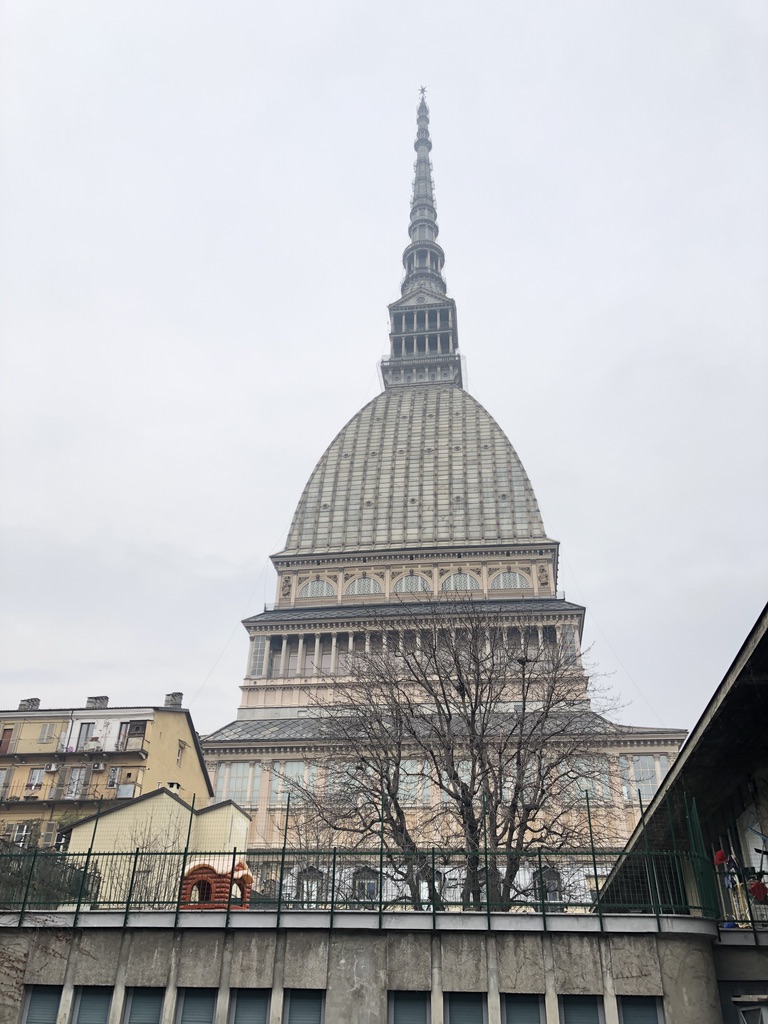
The main Temple Hall is where a number of moving images are projected on screen. This is also the central point from which you can access various other rooms dedicated to different genres.
A walk through the poster gallery is another great feature and photo opportunity, and also there are some fun interactive features too.
Without question, a trip to the top of the tower via a great glass elevator is essential when you are here.
MUSEO EGIZIO (EGYPTIAN MUSEUM)
Standing on this exact spot since 1824, this grand museum is the largest of its kind outside of Egypt and the oldest dedicated to Ancient Egypt. For anyone with a keen interest in Egyptology I cannot further emphasise how much you will love this museum. It is also great for families and children too, with special family passes and themed guides too.
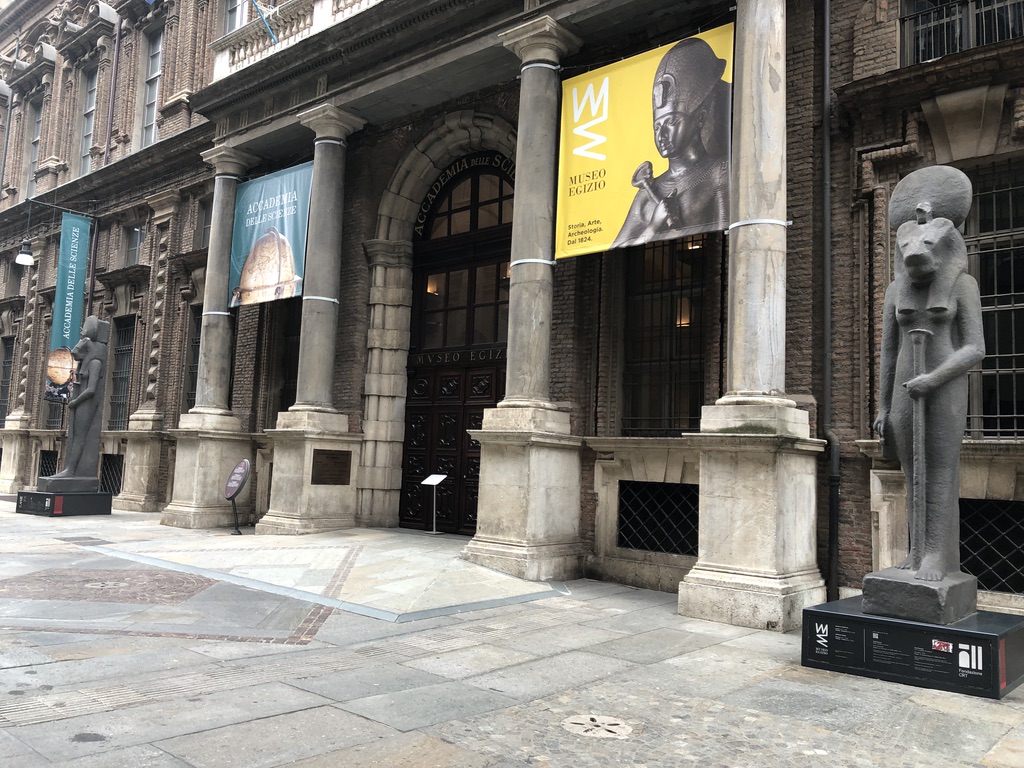
With over 20,000 artefacts on display, it is hard to choose just one stand out exhibit. Among its most notable are a reconstruction of the rock-cut structure of the Temple of Elysia and the golden coffin of the Tomb of Kha. Also some of the oldest surviving maps depicted on papyrus paper form part of a specific collection. The Gallery of Kings room is quite spectacularly laid out as various statues of Egyptian kings and gods and goddesses illuminate across a darkened room.
ROYAL PALACE OF TURIN
The Piazza Castello is very much the central ground zero point for exploring the city of Turin and it is here that you will find the historic sites from which the city’s rulers ruled.
The Royal Palace is more than just a royal residence. This is the location for the Sabauda Gallery, the grand historic collection of paintings amassed by the Savoy-Carignano dynasties. Also, another most spectacular display here is that of the Royal Armouries. Entire rooms dedicated to swords and knight’s armours dating back to the Middle Ages.
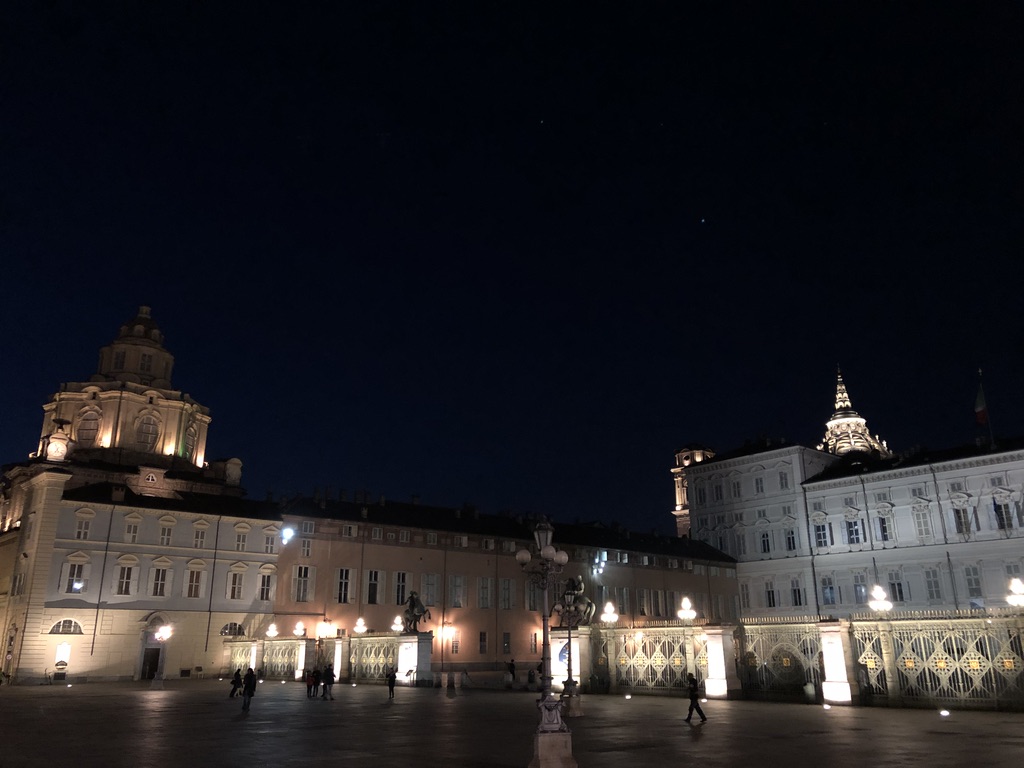
Many of the rooms are typical of your Baroque and Rococo opulence such as the sparkly chandeliers inside the King’s Apartments.
A ticket for the palace also includes access to the Duomo San Giovanni, the location of the legendary Turin Shroud that we will get to later on.
The Royal Palace is one of thousands that are part of the world renowned Sotheby’s network of museums.
https://www.sothebys.com/en/museums/royal-palace-of-turin
SUPERGA HILL AND THE BASILICA DI SUPERGA
Overlooking Turin below is the hill of Superga and its orange-cream glowing basilica church. One of a number of popular locations to watch over the rest of the city, Superga can be reached by funicular or by hiking or cycling to the top if you have the stamina!
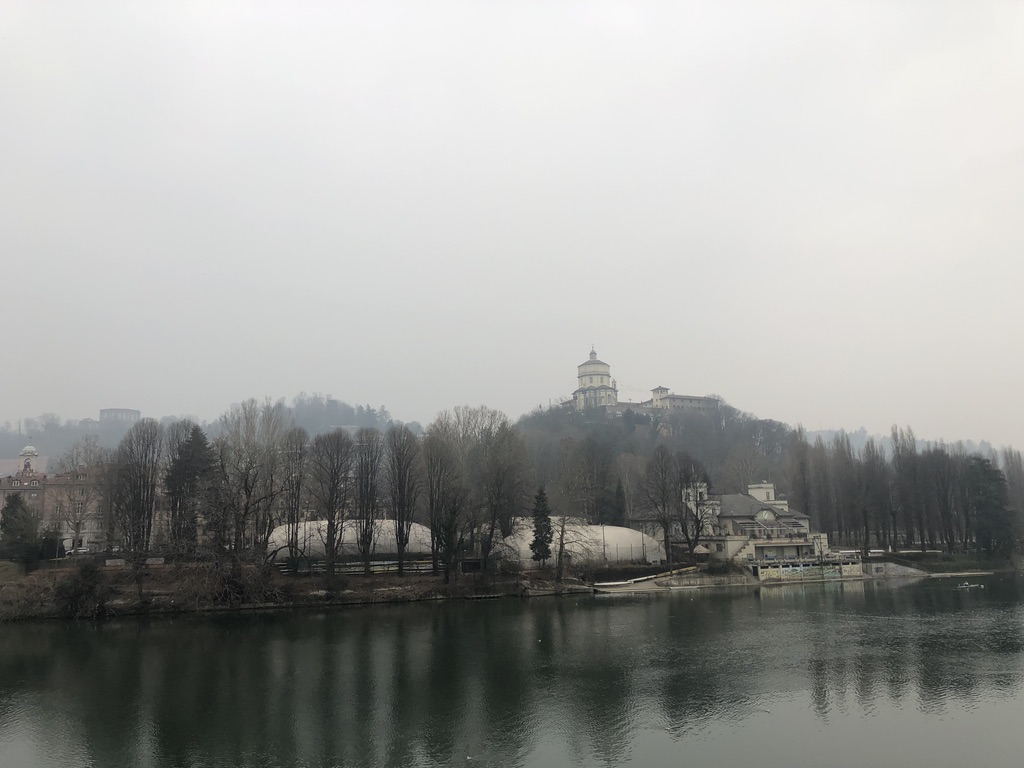
This mishmash of Baroque (its dome) and Neoclassical (the columns) was constructed by influential Turin architect Fillippo Juvara in the early 17th Centruy. Some observers have likened it to an amalgamation of Rome’s Pantheon and the dome of St.Peter’s Basilica. The Royal Crypt is also an essential visit to see the last resting place of former rulers and princes of the House of Savoy.
Superga Hill is also tragically associated with the Superga Air Disaster of 1949 in which a plane carrying members of Torino FC crashed killing all on board. This is commemorated with a plaque and memorial.
PARCO VALENTINO
One of the things I love doing more than anything when visiting a major city is to seek out any of its public parks for a bit of reflection.
Parco Valentino in Turin is one of the most varied in terms of features and generally a perfect place for winding down. In fact in the 1950s, so vast is this park that it even hosted a motor racing track. The giant Castello Valentino dominates here adjacent to a small beach area by the banks of the River Po. Another grand Savoy residence of the 17th Century but which has changed use in the last century. Now serves as both a museum exhibition and also the location of the architecture faculty of the Politecnico di Torino. Also within its grounds is the Botanical Gardens of Turin.
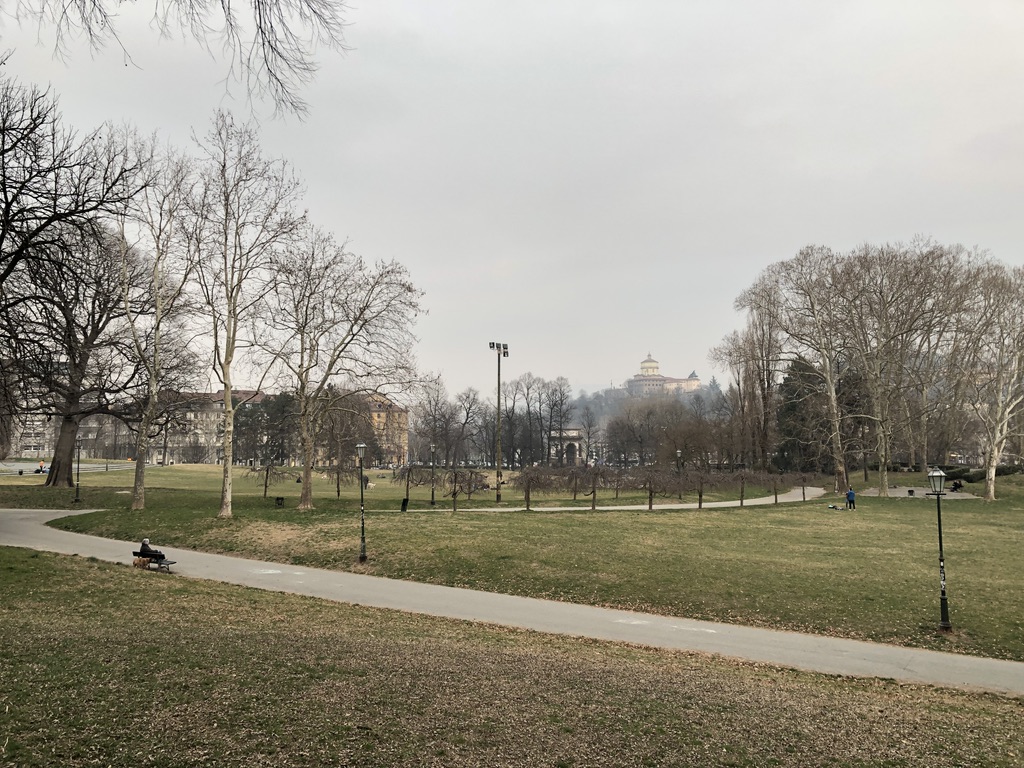
Taking a gentle laid-back stroll through the park there was a nice small location that almost looked like a mini beach. Not exactly suitable for sunbathing or building sandcastles, but a little section of sand enclosed where waves of the River Po gently brush against the rocks. A very pleasant location on a fine day to observe punters rowing along.
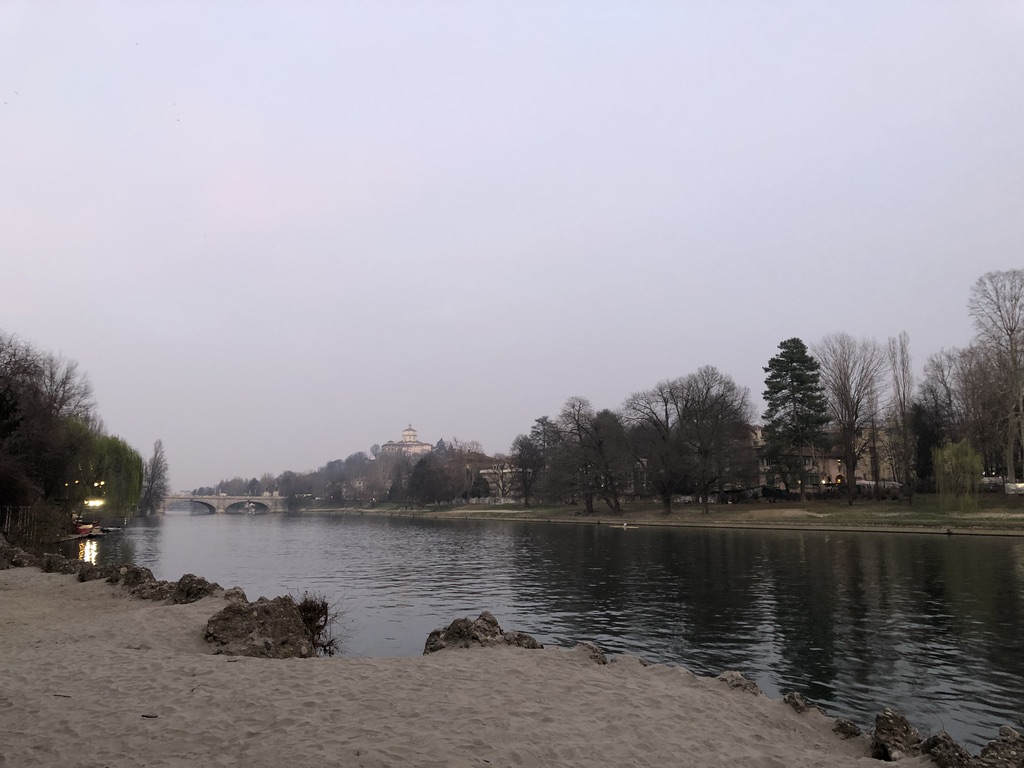
A great source of fascination and wonder is the Borgo Medievale, a specially constructed authentic recreation of medieval village life. This very reminiscent of your typical living history museums.
https://www.turismotorino.org/en/experiences/hiking-and-outdoor-activities/parco-del-valentino
TURIN’S AUTOMOBILE MUSEUM
At the beating heart of Turin’s industrial powerhouse status is the Fiat automobile and the Agnelli family. Located near the Lingotto stop on the metro at first glance Turin’s giant concrete Automobile Museum may resemble an official government building.
Like the notable museums in Stuttgart, this is also another very interesting exhibition chronicling the history of the automobile and its primitive beginnings. Naturally there is a focus on Fiat and other great Italian names such as Ferrari and Alfa Romeo but also many other great names from the rest of Europe too.
http://turin-g41e76997f_1920.jpg
Also here there are various exhibition rooms such as one focusing on the design of the cars and the mechanics and also a Formula 1 room.
The museum also houses a very large library and documentation centre of records and archives but you do need to book in advance for access.
An absolutely essential place to visit for anyone with only even a passing interest in cars.
https://museoauto.com/en
PALAZZO MADAMA
The central grand palace of the Piazza Castello is also the location for Turin’s City Museum of Ancient Art. The collection has a particular emphasis on Baroque and Renaissance art. On the lower ground floor there are a number of sculptures dating back to the Middle Ages. The ground floor is perhaps the largest collection covering the Renaissance years. The first floor focuses on 17th and 18th Century paintings, and the Baroque periods.
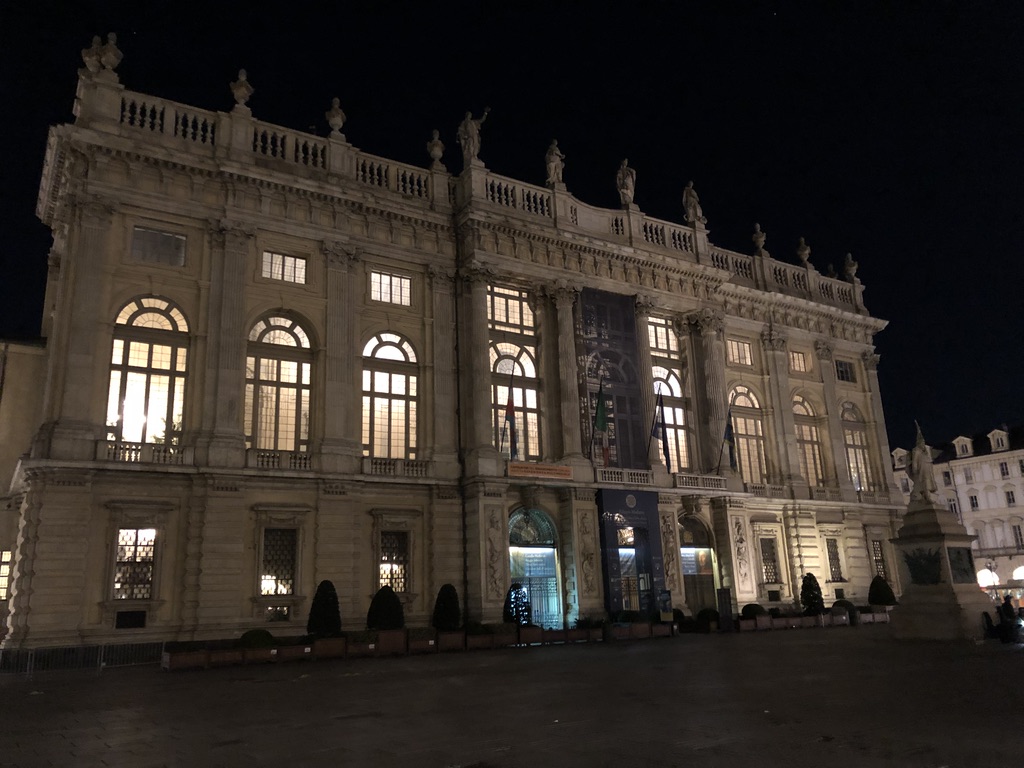
Looking at the building is, not for the first time in Turin, a contrast of two halves. The Baroque front designed by Juvarra and the back, which still looks more like a Medieval castle. Unfortunately, Juvarra never got round to completing the proposed renovation.
Going inside the winding marble staircases are a stunning sight for photos. There is even space for a little garden area within the grounds too.
https://www.palazzomadamatorino.it/en
PALAZZO CARIGNANO
Another two-face building with the marble Baroque on one side and another side a redbrick exterior with a curving concave-convex-concave triumvirate.
A former residence of the Carignano branch of the House of Savoy, on the Baroque side is the entrance to the Museo del Risorgimento.
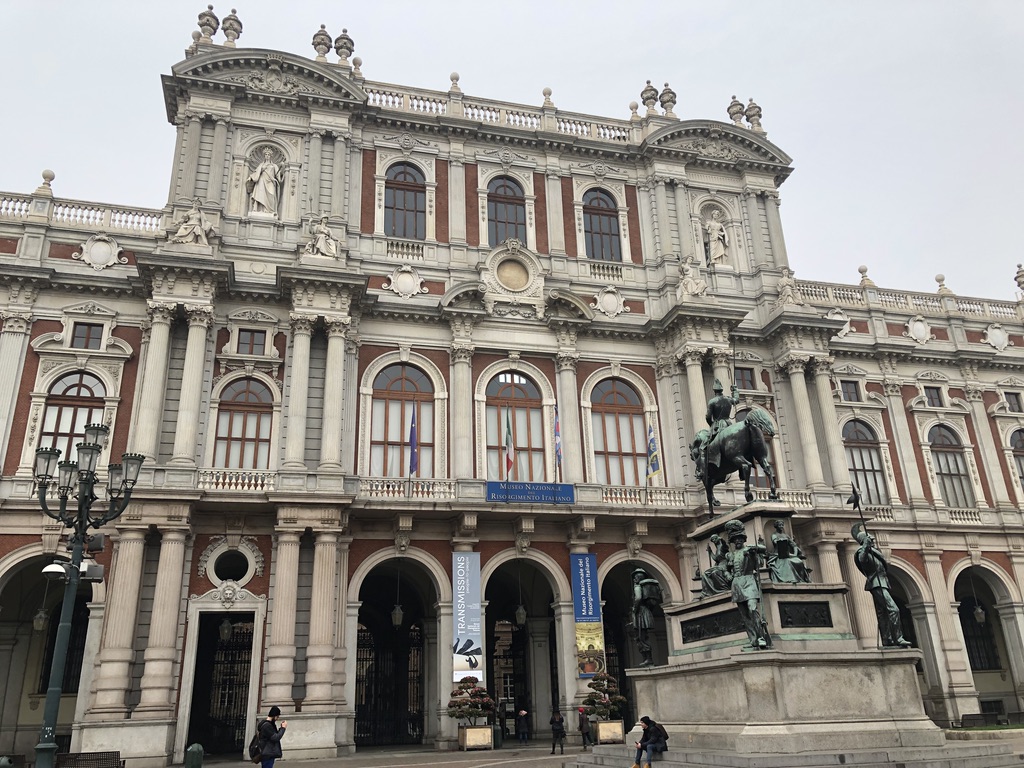
This provides a detailed look at the 19th Century unification of what would become Italy. The Palazzo Carignano was also the location of Italy’s first parliament post-Risorgimento before eventual relocation to Rome.
https://www.palazzocarignano.it/
PIAZZA SAN CARLO
Nearer the Museo Egizio is one of Turin’s prime pedestrianized hang-out spots. The horsebound statue of Emmanuel Philbot, Duke of Savoy stands out in the centre square. Two identical twin Baroque churches stand side by side at one end of the square.
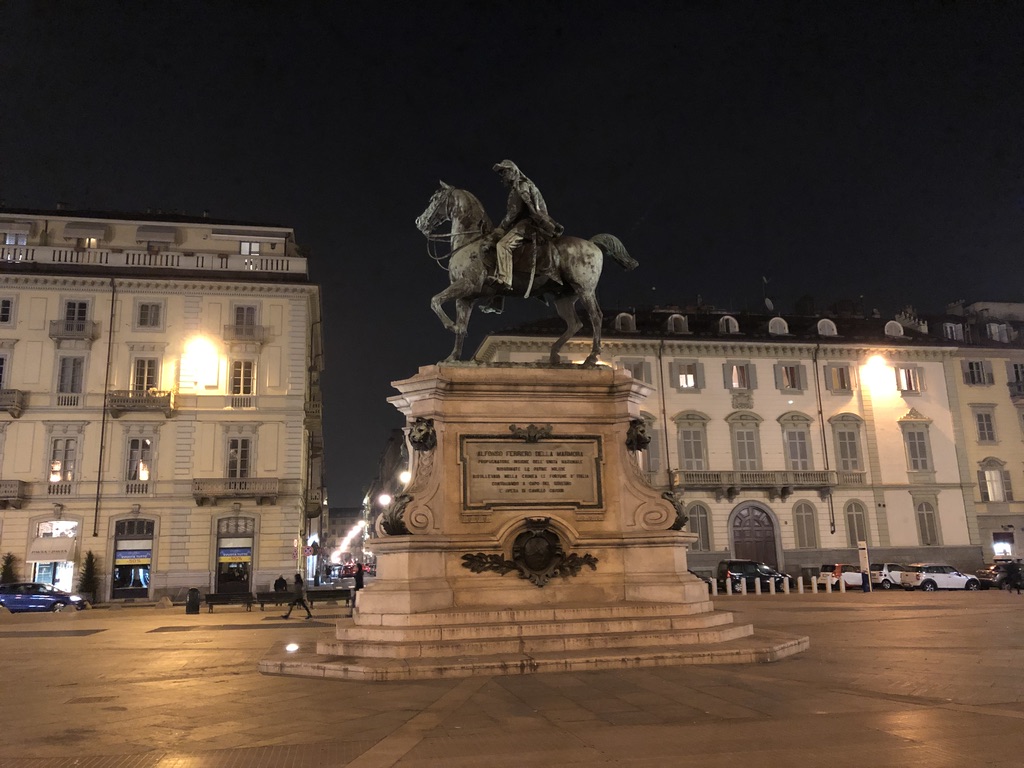
This most typically Turin square with its porticos is where you find the location of one of Turin’s most beloved locations and creations. With the truly photogenic Martini neon sign perched beside the entrance that does enhance the cult status thrust upon Caffe Torino. Serving customers since the late 19th Century this is also a recommended spot for a bicerin. Turin’s symbolic beverage that is a strong espresso with extra hot chocolate and whipped cream on top. No trip to Turin is ever complete with tasting a bicerin and of the many possible cafes in which to sample, this is one of the stand outs.
PORTA PALATINA
The remains of an ancient city gate mark the boundary of the old town of Turin. Moreso, the only such artefact in Turin today that still stands dating back to Roman times. The earliest evidence of a city gate here goes back to the 1st Century BC and today makes up a miniature archaeological park.
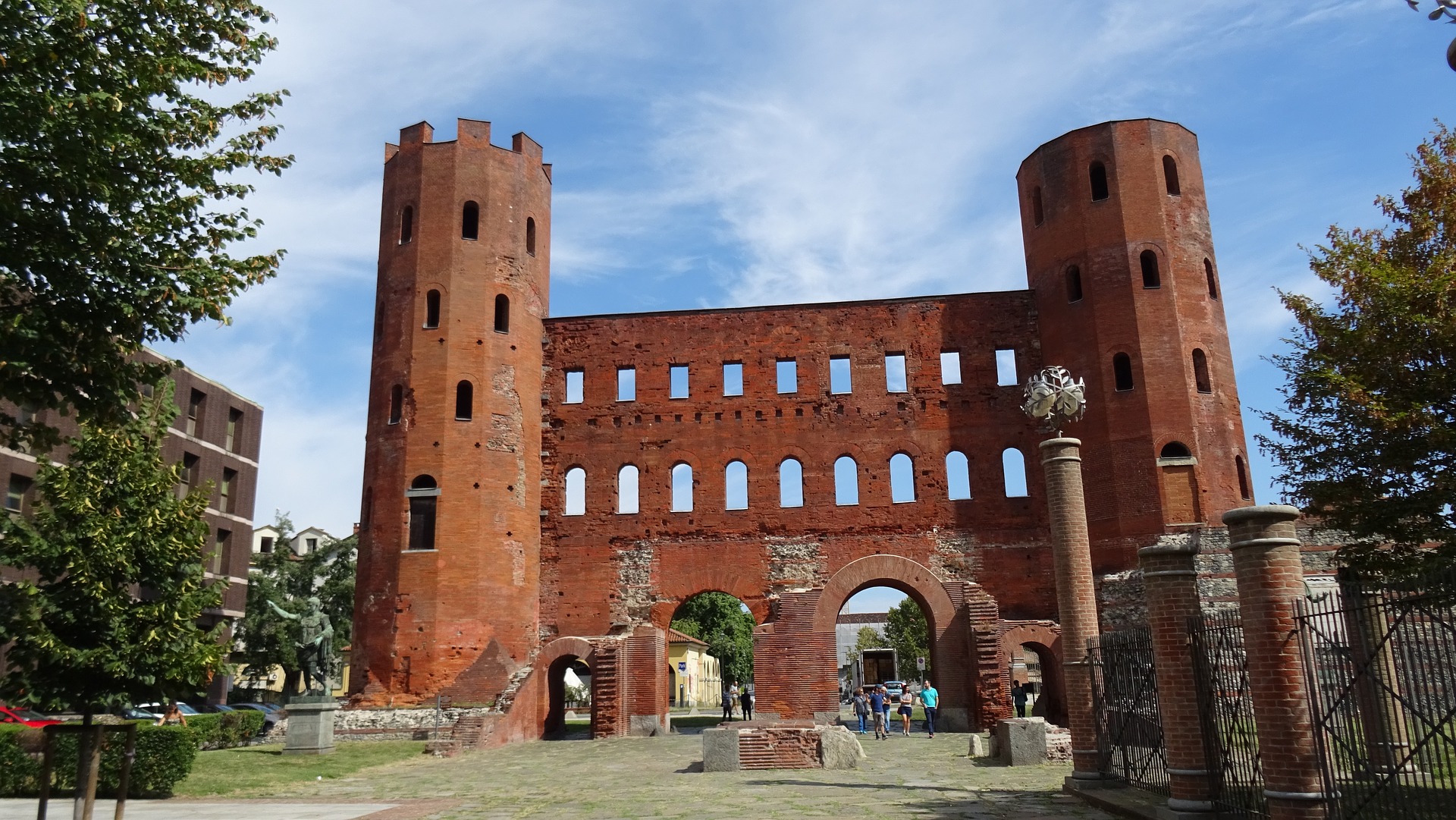
Statues of Caesar and Augustus welcome you and it is fascinating to look up and marvel at how much painstaking dedication has preserved the remains of a structure dating back two millennia.
DUOMO SAN GIOVANNI AND THE SHROUD OF TURIN
Connected on to the Royal Palace is the Romanesque church of San Giovanni. Most notable as the location of the legendary Turin Shroud, the piece of cloth that has been a source of fascination. This down to the legendary belief that it is supposed to bear an image of Christ and is part of what he was buried in. Unfortunately the shroud is not on display as it is locked up in the vaults here but there are plenty of displays to learn about this.
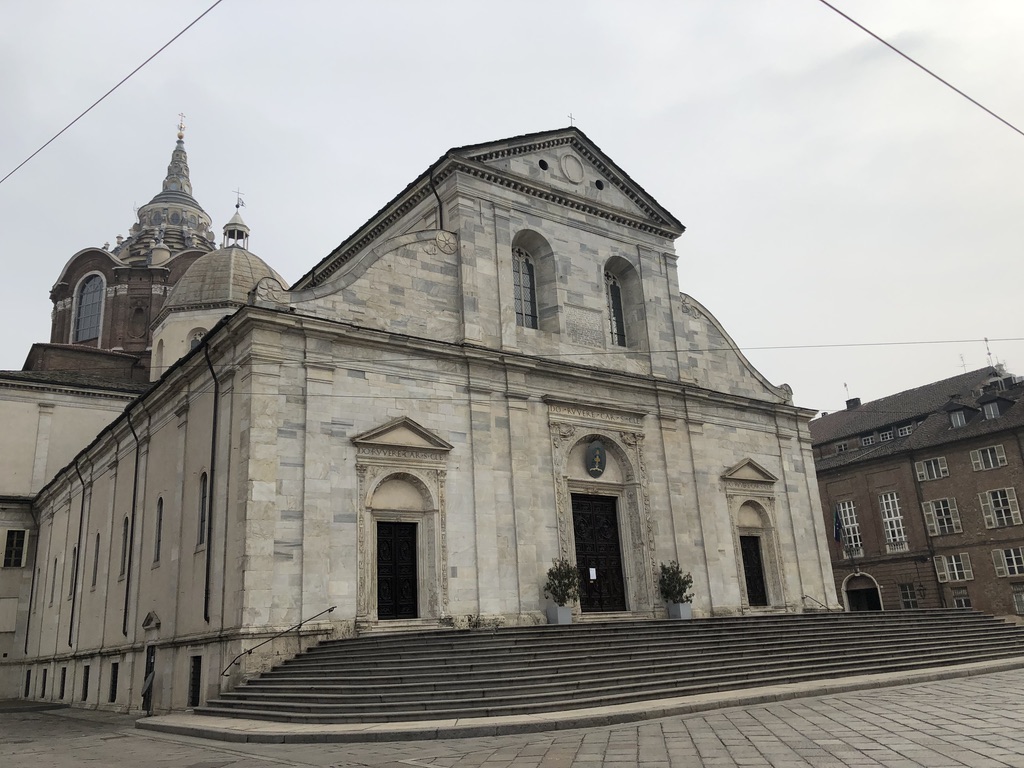
Only on very rare and special occasions has the real cloth been on display to the public, most recently in 2010. But we will have to wait and see when the opportunity next arises.
https://www.facebook.com/parrocchiaduomotorino/
VIA PO
Of all of Turin’s long stretching streets with pedestrianized porticos on each side, one that you are most likely to go through is the Via Po. A thoroughfare that stretches between the Piazza Castello all the Vittorio Emmanuele bridge that crosses the river with which the street shares its name.
Walking along the cloistered streets to get a real feel for Turin. Along here you will find all sorts of interesting stores, cafes and most intriguingly second hand book stalls.
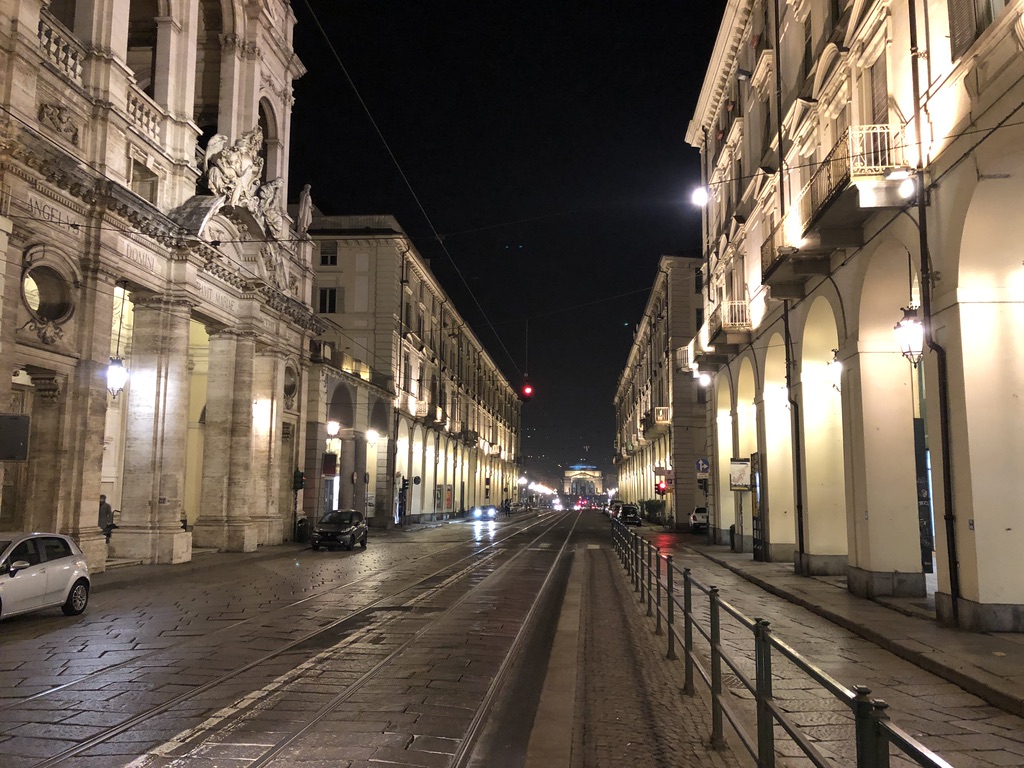
The Palazzo Vittorio Veneto is another great people-watching location. Nearby is the Accorsi-Ometto Museum. A smaller museum in comparison to most but a very interesting exhibit of elaborate furnishings.
https://www.fondazioneaccorsi-ometto.it/en/
VIA ROMA AND VIA GARIBALDI
Another notable Turin street you are sure to cross is the Via Roma. Also characterised by cloistered side streets but this a location for more high end shopping. Interrupted by the Piazza San Carlo in the middle but not before the fascinating twin sculptures of Neptune. A counterpoint to the the identical twin churches in the Piazza San Carlo? The Via Roma is another long street that eventually does lead to the Piazza Castello. From there it links to another notable street, Via Giuseppe Garibaldi.
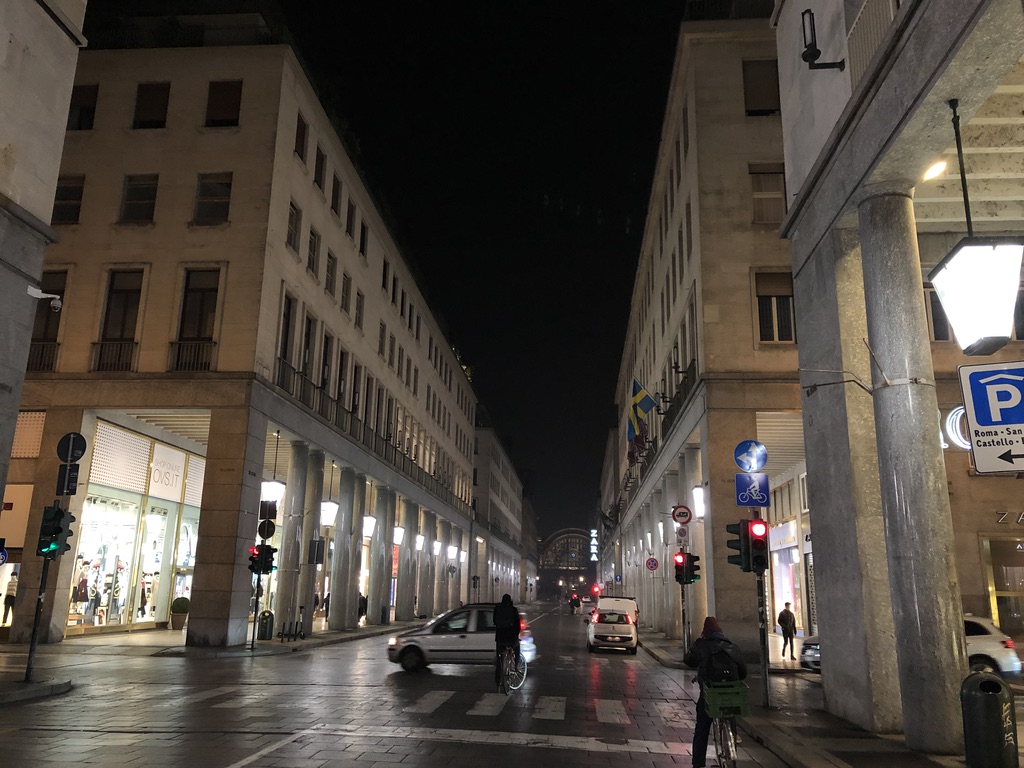
This time a pedestrianized street typical of your standard European streets of typical run-of-the-mill shops you’d normally expect. But also stop for a few minutes to look inside the Chiesa dei Santi Martiri, the Holy Martyrs Church.
FOOTBALL (JUVENTUS AND TORINO)
Of course there is no escaping the enthusiasm for calcio in Italy and Turin is home to Italy’s most successful and subsequently resented team, Juventus. The “Old Lady” of Italian football has won more titles than any other team. They won a staggering NINE Serie A titles in a row between 2012 and 2020. That, a record in Italian football.
Home games are played at the modern Juventus Stadium on the outskirts of town. This was built on the site of its predecessor the widely unpopular Stadio Delle Alpi. A ground constructed for the 1990 World Cup but drew a lot of criticism for its distant spectator views.
FC Torino is seen as the true team of Turin in contrast to Juventus’ more global status. They were the all conquering champions of the post-WW2 era but tragically haunted by the Superga air disaster of 1949. Il Toro have had a number of difficulties since and remain in the shadow of Juve.
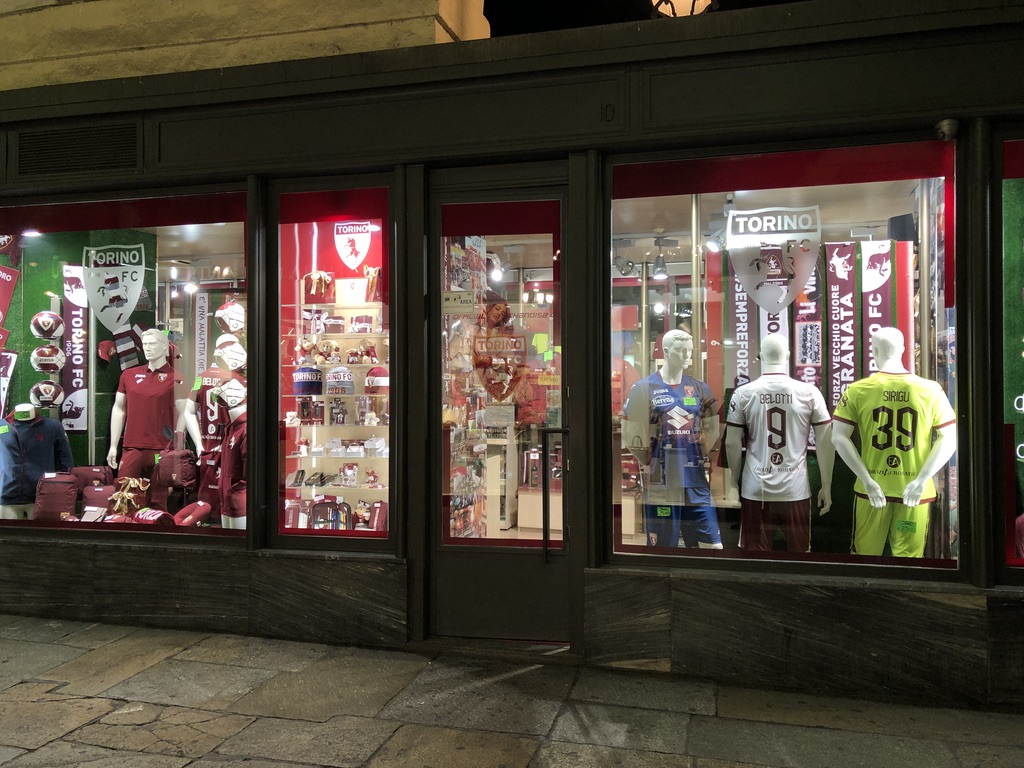
La Granata, as they are nicknamed because of their maroon shirts, play home matches at the Stadio Olimpico that was built for the 2006 Winter Olympics.
Incidentally was a full scale renovation of the old Stadio Communale where both clubs shared until 1990. Confused yet?
Both teams do have their own official club shops in the city as well as next to their respective stadia. Juventus Store is on the Via Garibaldi and Torino’s “Granata Store” in the intersection of the Piazza Castello. So now you know where to go to get your merchandise and declare loyalty!
https://www.juventus.com/en/club/juventus-store/turin
https://www.granatastore.it/
CASA MARTINI
Shaken or stirred, the Martini cocktail has a close connection with Turin and the Piedmont region. The neon lit signs displaying its iconic logo along the cloisters of the Via Po will certainly remind you of this.
It was in 1863 that Alessandro Martini and Luigi Rossi concocted their own spin on the cocktail. Here in the former residence of Rossi himself you can get a full-on interactive experience.
Casa Martini is located outside the city of Turin itself but is very easy to get to.
It is literally opposite the train station of the village of Pessione, a direct 20 minute journey from Turin’s Porta Susa Station.